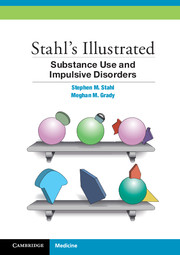Book contents
- Frontmatter
- Preface
- Contents
- CME Information
- Objectives
- Chapter 1 Substance Use and Addiction: An Overview
- Chapter 2 The Neurobiology of Reward and Drug Addiction
- Chapter 3 Alcohol
- Chapter 4 Opioids
- Chapter 5 Nicotine
- Chapter 6 Stimulants
- Chapter 7 Marijuana
- Chapter 8 Other Drugs of Abuse
- Chapter 9 Psychosocial Treatment for Substance Use Disorders
- Chapter 10 Disorders of Impulsivity and Compulsivity
- Summary
- Abbreviations
- References
- Index
- CME: Posttest and Certificate
Chapter 8 - Other Drugs of Abuse
Published online by Cambridge University Press: 05 February 2013
- Frontmatter
- Preface
- Contents
- CME Information
- Objectives
- Chapter 1 Substance Use and Addiction: An Overview
- Chapter 2 The Neurobiology of Reward and Drug Addiction
- Chapter 3 Alcohol
- Chapter 4 Opioids
- Chapter 5 Nicotine
- Chapter 6 Stimulants
- Chapter 7 Marijuana
- Chapter 8 Other Drugs of Abuse
- Chapter 9 Psychosocial Treatment for Substance Use Disorders
- Chapter 10 Disorders of Impulsivity and Compulsivity
- Summary
- Abbreviations
- References
- Index
- CME: Posttest and Certificate
Summary
Many other substances are abused for their reinforcing properties. These agents, which include sedative hypnotics, hallucinogens, “club drugs,” designer drugs, and even ordinary household products, may not have the addictive potential of some of the agents discussed in previous chapters; however, they are all extremely dangerous. This chapter briefly covers how these agents work as well as the effects that they can have.
Compared with benzodiazepines, barbiturates are much less safe in overdose, cause dependence more frequently, are abused more frequently, and produce much more dangerous withdrawal reactions. Apparently, the receptor site at GABA-A receptors that mediates the pharmacological actions of barbiturates is even more readily desensitized, and with even more dangerous consequences, than the benzodiazepine receptor site. The barbiturate site also seems to mediate a more intense euphoria and a more desirable sense of tranquility than the benzodiazepine receptor site. Since benzodiazepines are generally an adequate alternative to barbiturates, clinicians can help to minimize the abuse of barbiturates by prescribing them rarely, if ever. In the case of withdrawal reactions, reinstituting and then tapering the offending barbiturate under close clinical supervision can assist the detoxification process.
Specific symptoms of hallucinogen intoxication include visual “trails,” in which the image smears into streaks as it moves across a visual trail, macropsia and micropsia, emotional and mood lability, subjective slowing of time, the sense that colors are heard and sounds are seen, intensification of sound perception, and depersonalization and derealization. Other symptoms may include impaired judgment, fear of losing one's mind, anxiety, nausea, tachycardia, increased blood pressure, and increased body temperature. Not surprisingly, hallucinogen intoxication can cause what is perceived as a panic attack, which is often called a “bad trip.” As intoxication escalates, one can experience an acute state of disorientation and agitation. This can evolve further into frank psychosis, with delusions and paranoia.
There are 2 major classes of hallucinogenic drugs. The agents in the first class resemble serotonin and include the classic hallucinogens LSD (d-lysergic acid diethylamide), psilocybin, and dimethyltryptamine (DMT). The agents in the second class resemble norepinephrine and dopamine and are related to amphetamine; they include mescaline and DOM (2,5-dimethoxy-4-methylamphetamine). Recently, synthetic chemists have come up with some new “designer drugs,” such as MDMA (3,4-methylenedioxymethamphetamine) and “foxy” (5-methoxydiisopropyltryptamine). These are either stimulants or hallucinogens and produce a complex subjective state sometimes referred to as “ecstasy,” which is also what abusers call MDMA itself.
- Type
- Chapter
- Information
- Stahl's Illustrated Substance Use and Impulsive Disorders , pp. 121 - 132Publisher: Cambridge University PressPrint publication year: 2012



